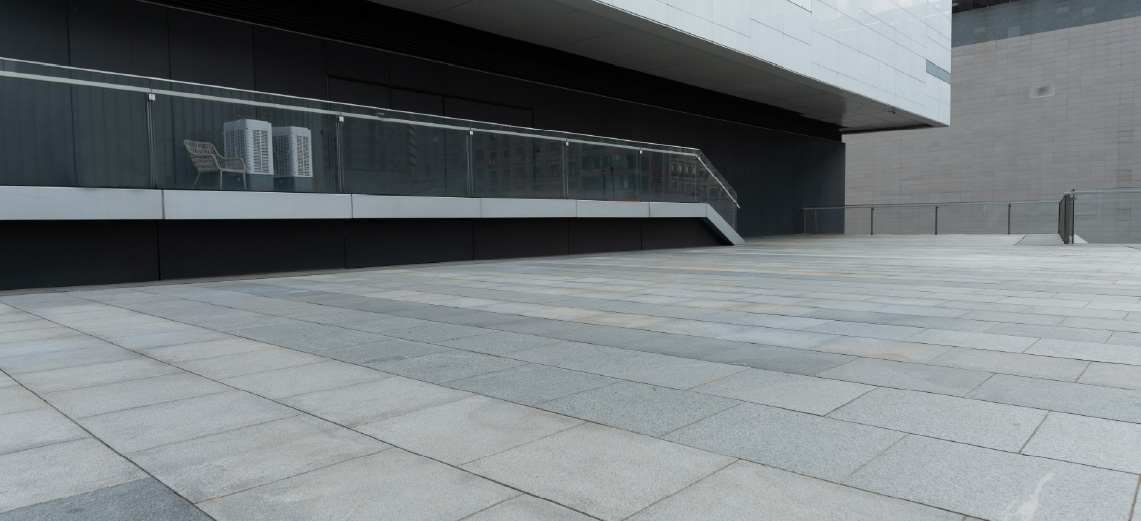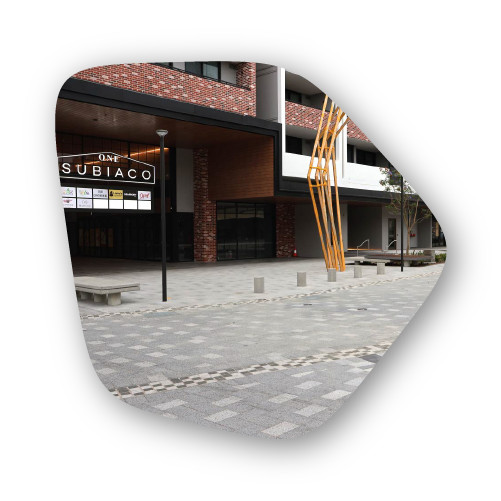
The Commercial Paving Trends You Need To Know For 2025: What’s Working And What’s Not
As we enter the second half of 2025, it’s clear that commercial paving is evolving. Design decisions around paving are no longer just about durability—they now influence how public, civic and commercial spaces feel, function, and perform over time.
Whether you’re planning a shopping centre, hospitality courtyard, or council pathway, understanding what’s working—and what isn’t—is key to getting it right. July is a natural checkpoint for builders, designers and specifiers to take stock of the trends that are shaping commercial landscapes this year.
What’s Working in 2025: Key Commercial Paving Trends
1. Textured, Slip-Resistant Surfaces
Pedestrian safety and comfort are top priorities in today’s commercial spaces. Pavers with a lightly textured finish are proving popular, offering enough grip for slip resistance without feeling coarse or abrasive.
These surfaces are especially common in:
- Public walkways and forecourts
- Alfresco dining precincts
- Pool surrounds and water-adjacent areas
Expect to see a continued shift towards shot-blast, bush-hammered, and natural stone-style finishes across high-traffic commercial zones.
2. Warm Neutrals and Natural Hues
Colour trends in 2025 are leaning toward understated, natural tones that offer long-term visual appeal. Mid-greys, warm beiges, and soft charcoals are preferred over stark whites or jet blacks.
These tones provide better heat management in open-air spaces and blend seamlessly with both soft and hard landscaping elements.
3. Large-Format Paving
Large-format pavers (600x400mm and up) remain in high demand for Perth commercial installations. Their cleaner lines, reduced joints, and sleek proportions make them ideal for:
- Retail and hospitality entry points
- Apartment common areas
- Urban redevelopment sites
Larger units also reduce laying time, helping builders meet tight construction timelines without compromising on finish quality.
4. Permeable Paving for Drainage Control
Stormwater management is a growing consideration in urban design, and permeable paving systems are playing a bigger role in response. These pavers allow rainwater to filter through to the ground below, helping to:
- Minimise surface runoff
- Reduce pooling on flat sites
- Support council compliance with WSUD strategies
Developers and local governments alike are integrating these systems into commercial car parks, pedestrian areas and open civic spaces.

5. Locally Made Materials With Proven Performance
With construction schedules tightening and sustainability targets rising, Australian-made pavers are being specified more than ever. Local production not only reduces delivery lead times—it also ensures the product has been tested for local conditions, from UV exposure to heat retention.
For projects aiming to reduce carbon impact or meet environmental certification benchmarks, locally sourced materials are proving an easy win.
What’s Falling Behind: Trends Losing Steam
1. High-Gloss Surfaces
Slick, reflective paving may have once been a design feature, but it’s now widely viewed as impractical in commercial use. Glossy finishes can become slippery when wet and require more maintenance to keep looking clean.
Expect to see more matte, low-sheen, and softly textured surfaces as the standard for external public spaces.
2. Extreme Monochromes
Stark whites and solid blacks have their place, but they’re no longer leading choices for outdoor paving. These colours often create thermal issues under the sun and can quickly show stains or wear.
Neutral blends offer a more forgiving and functional finish, especially in high-use areas like schools, shopping centres or public plazas.
3. Non-Compliant Imports
Cost-cutting with untested imported pavers is on the way out. Commercial project managers and designers are increasingly aware of the long-term risks—surface failure, non-compliance with slip or load standards, and the lack of local warranty support.
Compliance with Australian Standards is now a baseline requirement in most commercial tenders.
Materials Making an Impact in Mid-2025
Looking ahead through the second half of the year, these materials are standing out in commercial applications:
- Shot-blasted concrete – for safety, consistency and visual appeal
- Reconstituted stone – mimics natural stone with fewer variables
- Exposed aggregate – still valued for decorative high-wear surfaces
- Coloured concrete with oxides – delivers lasting colour without surface coatings
These options combine function and finish, with many available in large formats and custom colours for more controlled results.
Practical Considerations for Commercial Projects
The right paving material isn’t just about the look—it’s about performance, maintenance and compliance. When specifying for commercial spaces, keep in mind:
- Slip resistance (AS 4586 compliance)
- Load-bearing strength for vehicle or trolley use
- Thermal performance in exposed locations
- Ease of maintenance for cleaning, repairs and wear
- UV and colour stability in sun-exposed applications
The best products balance all these factors—helping projects perform well into the future, not just at handover.
Sustainability Is No Longer Optional
Green building is no longer a fringe idea—it’s part of standard practice. Councils, developers and public asset managers are all incorporating sustainable sourcing and lifecycle considerations into their project briefs.
In paving, this could include:
- Selecting locally made materials with recycled content
- Reducing transport distances and freight emissions
- Specifying permeable systems as part of drainage planning
- Choosing long-wear products that reduce replacement needs
For projects seeking Green Star or ISC credits, paving materials can be an easy early win—if the right supplier is involved.
Final Thoughts: Where Commercial Paving Is Heading
As July kicks off the second half of the year, the direction for commercial paving is clear: durable, low-maintenance, locally sourced solutions with understated style and real-world performance.
Whether you’re working on a civic upgrade, retail fit-out, or commercial development, understanding current trends helps you stay ahead of the curve—and avoid costly missteps.
Looking for paving for your next commercial project?
Bonita Stone supplies high-quality, Australian-made pavers designed to meet the demands of commercial environments. Our team works closely with builders, landscape architects and developers to provide products that balance compliance, style and durability. Contact us today to discuss your requirements!






